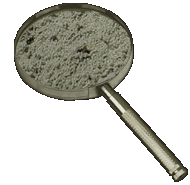|

|

|
|||||||||||||

|
Minerals
|
|
|
||||||||||||||||||||||||||||||||||||||||||||

|
When soil is poor, you can often blame the parent—parent rock, that is. A soil’s parent rock is the rock from which the soil formed, and it determines the nutrient richness of the resulting soil. The basalt lava flows of Hawaii break down quickly into a fertile soil, rich in minerals that plants need, such as potassium, magnesium, and calcium. Serpentinite, a soapy green stone abundant along the California coast, breaks down reluctantly to form a thin layer of potentially toxic soil, one that is low in plant nutrients and high in metals that can be poisonous to plants. Are the minerals in your garden the same minerals found in local mountains and bedrock? Not necessarily. Minerals in soil may reside far from their parent rocks, carried great distances by wind or water, or even by glaciers during past ice ages.
|
|
|||||||||||||||||||||||||||||||||||||||||||||
|
|
|
|
|
|
|
||||||||||||||||||||||||||||||||||||||||||
|
|
|
|
| © Exploratorium |
 A
typical soil is over 90 percent mineral, made of tiny fragments
of broken-down rock. Take a close look at some soil—better
yet, rub some between your fingers—and you may notice
tiny grains of quartz, feldspar, and shiny mica, or pearly
dolomite, or dark basalt from lava flows.
A
typical soil is over 90 percent mineral, made of tiny fragments
of broken-down rock. Take a close look at some soil—better
yet, rub some between your fingers—and you may notice
tiny grains of quartz, feldspar, and shiny mica, or pearly
dolomite, or dark basalt from lava flows.